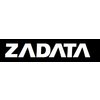Zvi Avraham
Chief Founder Monkey @ ZADATA
Zadata

Zvi came in touch with Erlang in 1998 and started using it professionally in 2007. He specialises in High Performance Distributed Systems in the Real-time Embedded with focus on the Internet, Mobile and Cloud domains. His recent venture is ZADATA - a marketplace and a platform for real-time Machine-generated data.
Twitter: @nivertech

Zvi Avraham is Giving the Following Talks
GPU-accelerated Geospatial Timeseries Database with Riak
In this talk, Zvi will share his experiences in developing a prototype of GPU-accelerated Geospatial Timeseries Database with Riak.
The words "Geospatial" and "Timeseries" simply means that each datapoint stored according to it's time and location.
The system allow to Acquire, Aggregate, Process and Query both Realtime and Historical Timeseries Data.
Talk objectives:
- Explain why Realtime Timeseries Data is important in the era of Big Data and Internet of Things.
- Discuss different database workloads and query types.
- Discuss Row vs. Column data stores.
- Give Intro to Riak and GPU programming using OpenCL.
- Show how to use OpenCL from Erlang to speedup computations: benchmarking pure-Erlang, NIF (Native C) and OpenCL code.
- Data Aggregation using time-boxing.
- Data Processing and Querying using Map/Reduce.
- Show how to process on GPU non-numerical data, such as tweets.
- Live demo: twitter streaming data processing and querying.
Target audience:
- Erlang developers and NoSQL database users.
Erlang - Concurrent Language for Concurrent World
Paraphrasing Joe Armstrong - one of the inventors of Erlang programming language: "We live in Concurrent World, so we need a Concurrent Language".
Similarly to the term OOP he coined the term COP, which means Concurrency-oriented Programming.
Talk objectives:
- Explain why Erlang is the answer to multithreaded programming and multicore revolution.
- Discuss basic principles and trade-offs used in Erlang software.
- Functional (Sequential) Erlang.
- Actor Theory and Concurrent Erlang.
- How Erlang VM and hot code reloading works.
- How Erlang communicates with "External World".
- Talk about Erlang tools and new languages implemented on top of Erlang VM.
- Where Erlang is a good fit and where is not.
- Erlang community and ecosystem.
Target audience:
- Software Developers looking to expand their horizons.
